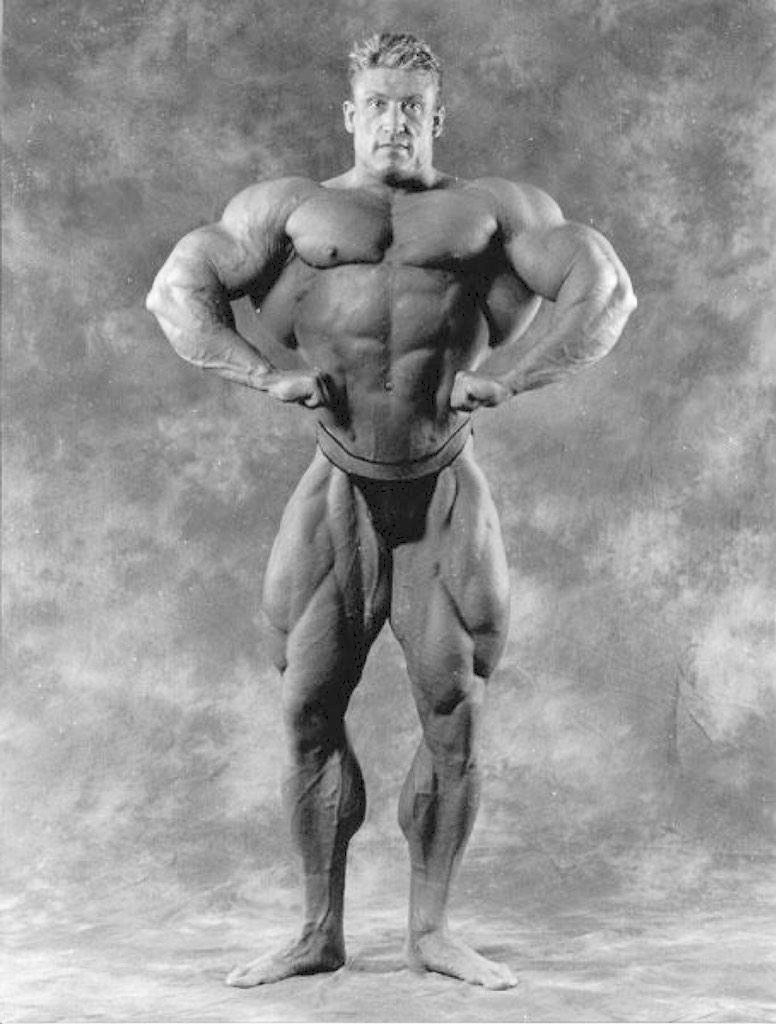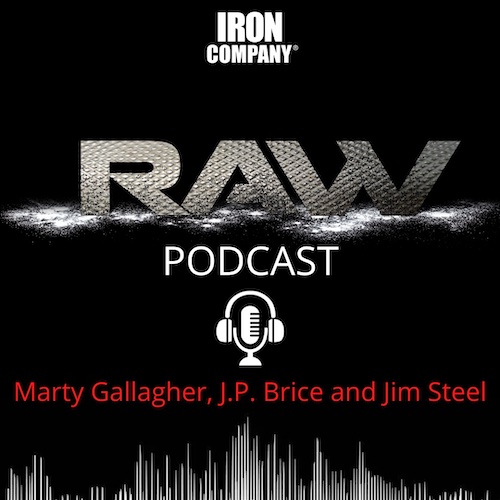
Bodybuilding versus Strength Training (Part 2)
Diametrically opposed? Peaceful coexistence? Synergistic Synthesis?
My friend of 30-years, Dorian Yates (above): he is the Poster Boy for “the power bodybuilder.” I picked this photo to back up my contention that Yates (the best back of all time) had the 2nd best legs ever, next only to Tom Platz
An elite bodybuilder seeking to increase the muscular size of a targeted body part and an elite athlete seeking to increase raw strength and power, have two dramatically different goals that demand two dramatically different training modalities. Bodybuilders, Olympic weightlifters, and powerlifters all use the identical tool, the barbell, in differing way to achieve differing goals.
Bodybuilding: subjective
- Divorced from performance: the elite bodybuilder uses resistance training to increase muscle size and to correct symmetrical imbalances. Any strength increases are purely incidental, an unintended consequence. Bodybuilding presentation requires no timed or measured performances. The winners are selected based on muscle size, symmetry, body fat percentile, posing, and overall visual appeal.
- Muscle expansion: designed to engorge a targeted muscle with blood via the “pump,” bodybuilding weight training creates maximum muscle size. By repeatedly stressing and pumping blood into the muscle, over time, this repeated muscle “inflation” creates a larger muscle. Correct symmetrical imbalances over time using “specialization” routines that “bring up” lagging body parts.
- High volume sessions: classically, a bodybuilder uses a wide array of exercises in each session to “attack” a targeted muscle from “different” angles. A serious bicep session might start with cheat curls, followed by seated incline dumbbell curls, then Preacher curls, and cable curls, 12-16-20 sets for one small muscle. Bodybuilding training sessions use a broad training menu resulting in lengthy sessions.
- High weekly frequency: bodybuilding sessions are not only long they need occur often. Old school bodybuilders trained each muscle three times a week, six days a week, using a “split-routine.” Modern bodybuilders weight train 4-6 days a week and perform daily cardio. Long sessions generate more frequency; their length requires they be chopped in half and done twice as often.
- Intensity amplifiers: bodybuilders induce intensity using forced reps, partial reps, same muscle giant sets, drop sets, negative reps, etc. The goal is to work a muscle past capacity. Intensity amplifiers, done with a training partner (forced reps,) or alone (drop sets.) On the “top set” in each exercise, after reaching positive failure, the set keeps going with an intensity amplifying set-extender.
- At their best, they are at their weakest: on the day of a bodybuilding competition, the bodybuilder is starved and depleted, this to maximize muscular definition and fiber clarity. All kinds of extreme modes and methods are used to leech muscularity-obscuring liquid out of layer between the muscle and skin. On the day of a bodybuilding “show,” the bodybuilder could not run ¼ mile without collapsing.
Strength Training: objective
- All about performance: the goal is to increase usable athletic strength via resistance training of a certain type and kind. Strength training seeks to increase power and strength; any muscle size increase is an unintended benefit. Successfully increasing power and strength to a significant degree creates a concurrent increase in lean muscle. Body fat percentiles are largely determined by cardio and diet.
- Usable athletic strength: there is such a thing as “wrong strong.” For the athlete, being proficient at Preacher Curls or PecDec will not improve athletic ability to the same degree as becoming a master of ass-on-heels squats or power cleans. Strength training prioritizes compound, multi-joint exercises over isolation exercises. Coordinated power is expressed via explosive compound exercises.
- Low volume sessions: a classical strength training session concentrates on doing fewer things better. Whereas the bodybuilder will wade through a shopping list of exercises, the strength trainer begins with explosive compound movements while the CNS is fresh, before segueing into the absolute strength powerlifts. If time and circumstance permit, “assistance exercises” are performed.
- Low weekly frequency: Attain full recovery before engaging in a serious strength training session. Training hard when partially recovered always generates suboptimal results. Train with 100% effort when 79% recovered and results must be subpar. Increase strength with a 102% effort done when 100% recovered. Intervals between sessions need be long enough for the body to completely recover.
- Periodized strategy: create a realistic goal and set the goal into a classical 12-week timeframe. Create weekly mini goals by reverse-engineering back to the timeframe starting point. Attain small weekly increments on a weekly basis. Insignificant weekly gains compound over the 12-week timeframe. Periodization is the establishing of goals and the preplanning needed to get there.
- At their best, they are at their strongest: the strength athlete deliberately peak power and strength. The strength training, coordinated with the timing of the event, ensures that the athlete is at their strongest on the day of the competition. There is an art and science to peaking strength. The bodybuilder training sessions goals and workout structure are totally opposite strength training tactics.
“East is East, and West is West - and never the two shall meet.” Rudyard Kipling
Kipling spoke to the idea that some things are so diametrically opposed that there is no compromise or synthesis. Oil and water can combine but they will never meld. Can the same be said for bodybuilding and strength training? Is there some sort of compromise training, a hybrid system, some synthesis that simultaneously produces both body-building muscle size and strength building raw power and torque? Is there a “3rd Way” of training that straddles both worlds without compromising results? The short answer is a resounding NO.
Thesis, antithesis – synthesis?
Strength training for bodybuilding: Dorian Yates ruled the bodybuilding world for six years with his heretofore never seen combination of gargantuan size and extreme leanness. Yates attained his mind-blowing muscle mass by using what I dubbed, “powerlifting – with forced reps.” Like an elite powerlifter Yates trained each muscle once a week using a limited number of exercises. Low-rep sets, extended when Yates’ fearsome training partner, Leroy, provided exquisite forced-reps. Yates attained positive failure with incredible poundage, i.e., 435x6 in the 45-degree barbell incline press, augmented with two perfect (“not too much, not too little”) forced reps. Yate would use 1 or 2 forced reps, no more.
Bodybuilding for strength training: Ed Coan was the greatest powerlifter in history. His reign lasted decades. He set world records in the 181, 198, 220 and 242-pound class. Ed was what I dubbed, a power-bodybuilder. Like the greatest superheavyweight powerlifter of all time, Bill “Kaz” Kazmier, Ed augmented his core powerlifts with a wide array of assistance exercises. Ed would augment deadlift training with wide-grip pullups and rows. Ed used the press-behind-the-neck as an assistance exercise for the bench press; he did curls, tricep pushdowns, one-legged leg presses, Coan gave priority to the powerlift of the day but would always follow up with a bodybuilding isolative assistance exercise.
About the Author - Marty Gallagher
As an athlete Marty Gallagher is a national and world champion in Olympic lifting and powerlifting. He was a world champion team coach in 1991 and coached Black's Gym to five national team titles. He's also coached some of the strongest men on the planet including Kirk Karwoski when he completed his world record 1,003 lb. squat. Today he teaches the US Secret Service and Tier 1 Spec Ops on how to maximize their strength in minimal time. As a writer since 1978 he’s written for Powerlifting USA, Milo, Flex Magazine, Muscle & Fitness, Prime Fitness, Washington Post, Dragon Door and now IRON COMPANY. He’s also the author of multiple books including Purposeful Primitive, Strong Medicine, Ed Coan’s book “Coan, The Man, the Myth, the Method" and numerous others. Read the Marty Gallagher Biography for a more in depth look at his credentials as an athlete, coach and writer.



